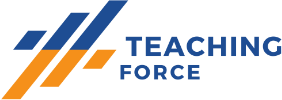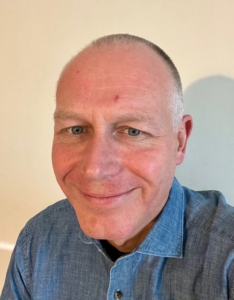The Program
TeachingForce is a scientifically proven, internationally acclaimed, two-year school improvement culture program, focused on noticeably and measurably:
- Increasing teacher job satisfaction,
- Increasing student’s joy in learning,
- Improving the quality of education delivered.



Introduction to the Teaching Force Program
Worldwide research shows that the quality of a country’s education system is heavily dependent on whether its schools have a continuous improvement culture. A culture in which teachers learn from each other and jointly improve educational outcomes. Stichting Leerkracht (= Dutch for “Teaching Force Foundation”) has developed and implemented such an approach in the Netherlands. Eight years after its start, 1,000 schools have chosen to use this approach to improve the quality of education.
You might have read about us in Forbes or in the HundrED community. You might be a school in another country that has an interest in a continuous improvement culture. Or a public organization or ministry that seeks to improve student outcomes. Are you wondering what Teaching Force can do for you?
We are willing to help and inspire you to bring that change to your own organization or country. How? Read on and find out:
1. What is known about the importance of a continuous improvement culture
A continuous improvement culture is hardly new or revolutionary. In regions with strong educational outcomes (e.g. in Ontario, Singapore, Estonia) and in high-performing companies and hospitals, this is a tried and tested way of working.
We based our approach on successes in these school systems, as well as the ‘lean’ and ‘agile’ methods of working that companies and hospitals use to work in a continuous improvement culture.
The 2010 McKinsey study How the world’s most improved school systems keep getting better stresses the importance of ‘process’ over structure and resources. Improving a system’s performance ultimately comes down to improving the learning experience of students in their classrooms.
The meta-analysis done by John Hattie came to the same conclusion. He concludes that ‘collective teacher efficacy’ is the #1 largest factor related to student achievement. With an effect size of 1,57 which dwarves classroom interventions like feedback (d=0.72) and classroom management (d=0.52).
2. What does a continuous improvement culture in a school look like? The Teaching Force - method
In a school with a continuous improvement culture, teachers learn from each other and – together with their students and the school administrators – improve educational practices. With the Teaching Force-method one can create such a culture of “Making it a little Better Together every day” in your school. How does that work?
It is based on three pre-conditions (ambition, rhythm and retrospective) that, together with the four Teaching Force-instruments, form the core of the concept. These conditions are:
- Ambition. At the beginning of the school year, the school team will reassess its ambitions and decide on the educational topics it wants to work on this year. These themes are put on a year board, divided into different periods.
- Rhythm. After working on its ambition, the team goes to work on the individual themes in (smaller) teams of 6 to 10 teachers. They do so in periods of 6 to 8 weeks. Each period starts with making a theme concrete and achievable in terms of goals and actions. Thereafter the teams come together in weekly team sessions of 2 hours to work on these actions.
- Retrospective. At the end of a period, each team reflects on its educational goal and its way of working. This takes the form of a ‘retrospective’ and ends with concrete improvement actions for the next period.
- The improvement session. The improvement session is a weekly 15-minute, stand-up meeting, in which teachers and school management discuss progress towards the goals the teacher teams decide on. After the improvement session, the team continues for another hour and a half to work on their teaching practice (the work session).
- Joint lesson design and planning. Teachers work in pairs to translate the goals they have set with their team into concrete lesson plans. By preparing lessons together, they make use of each other’s knowledge and skills and improve their own practice.
- Lesson visit and feedback. Whether an improved lesson design works can only be proven in practice. That is why in each pair one teacher gives this lesson and asks his or her colleague to join and observe it. The purpose of the observation is to understand the effect of the lesson on students.
- The voice of the student. The student is the greatest source of inspiration for new lesson goals. They are uniquely able to provide feedback on teaching and thus participate in improvement.
3. How the Teaching Force-approach works that creates such a culture
We built our Teaching Force–approach together with pilot–schools, learning from their experience and feedback. In the past 8 years, we’ve had 1.000 schools participating in our approach, which is about 12% of all Dutch schools. Every school that participates in our program receives measurement tools by which we can get an indication of the impact that is made on that school.
Independent impact research by the University of Utrecht, paid for by the Dutch ministry of education, shows that our approach works. This study in 231 schools is still in progress, but initial results confirm that we can create a continuous–improvement culture in a school within one year. Eighty to ninety percent of participating school leaders and teachers have great confidence that our methods lead to better teaching quality. Most excitingly, initial results in primary schools suggest an 8 percent improvement in learning outcomes two years after the start of the program.
To deliver these outcomes we developed a change management approach. The aim of this approach is to create a culture of continuous improvement. The approach consists of four phases:
Preparation phase. Representatives of the school get to know the Teaching Force–approach and we help them create support for participation in the team. The school leader makes time available for the team members. Furthermore, a small Teaching Force–team is formed of teachers and school administrators, who will work together to prepare for the kick–off of the program and guide the team during implementation.
Kick–off. In this day–long meeting the school team reassesses its ambitions and decide on the educational topics it wants to work on this year. These themes are put on a year board, divided into different periods. Thereafter each (sub)teams develops concrete goals and actions for the first topic.
Implementation phase. The teams work with the four Teaching Force–instruments in a weekly rhythm to achieve their first educational goals. In doing so, they experience successes and learn how continuous improvement works in practice.
Continuous improvement phase. Teams use Teaching Force to realize a new educational goal every period. Students are involved in the improvement of education. They adapt the Teaching Force–method to fit their own school.
We strongly believe that schools that work with a continuous improvement culture offer better quality education. Therefore, our wish is that more countries can work in a similar way, so that millions of students receive better education. We offer to help you and inspire you in finding a way to implement this in your own country.
Interested how Teaching Force can help the teachers, students and administrators at your school?
Please contact Peter or Ties below


